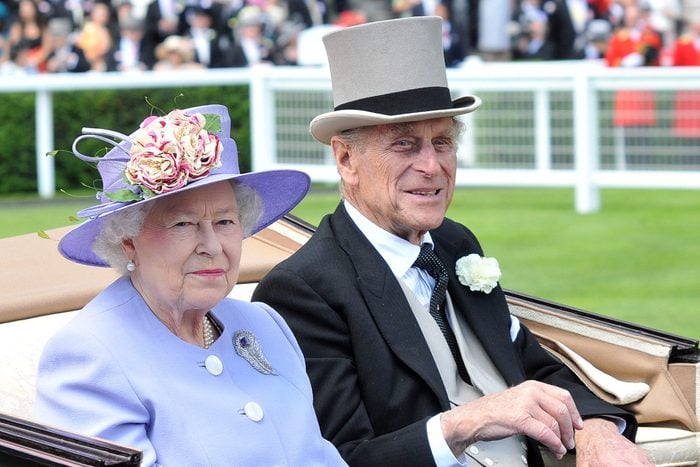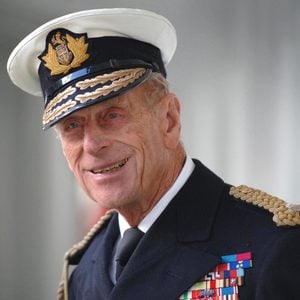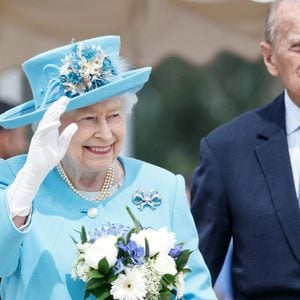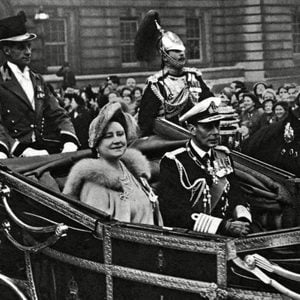Why Prince Philip Wasn’t King of England—Explained
Updated: Dec. 07, 2022

Prince Philip remained a prince when his wife, Queen Elizabeth II, took the throne. So why was he not King Philip?
Get Reader’s Digest’s Read Up newsletter for more humor, cleaning, travel, tech and fun facts all week long.
One of the more curious facts about Prince Philip, the husband of the late Queen Elizabeth II and father of King Charles III, is that he was not the King of England during Queen Elizabeth’s reign. Rather, he was Prince Philip (also known as the Duke of Edinburgh). But now that Charles is king following Queen Elizabeth’s death, his wife, Camilla Parker Bowles, will be known as Queen Consort Camilla for as long as Charles lives.
So, you might wonder: If Camilla’s title was changed to queen consort, then why wasn’t Prince Philip king?
Why is Camilla queen consort?
Camilla Parker Bowles‘s title is queen consort because she’s married to King Charles, who is now a reigning male monarch. She wasn’t always supposed to be queen consort, though. When Charles and Camilla wed in 2005, it was thought that she would be called princess consort when Charles became king. That all changed in February 2022, when Queen Elizabeth announced in her Accession Day message that she wished for Camilla to have the queen consort title once Charles ascended to the throne. Many questioned what the title meant, as it soon became one of 2022’s Merriam Webster’s words of the year.
So, why wasn’t Prince Philip king?
The answer is found in British Parliamentary law, which determines who’s up next for the throne, and also what title his or her spouse will have. In terms of succession, the law looks only to blood, and not to gender. This rule makes the royal family tree sound complicated, but it’s actually easily explained. In terms of the spouses of royalty, however, that law treats men and women differently.
Royal bloodline male marriages
When a male in the royal bloodline marries, his wife takes whatever is the female form of his title. Thus, when Prince William married Kate Middleton and became Duke of Cambridge, Kate became Duchess of Cambridge, and when he became Prince of Wales when Charles took the throne, Kate became Princess of Wales (a title synonymous with her late mother-in-law, Princess Diana). So, when Prince William becomes king, Kate’s title will change to match William’s.
And delving back a couple of generations, when Queen Elizabeth II’s father, George VI, became king, his wife’s title became “queen consort,” although she was usually referred to as “Queen Elizabeth” (having been born Elizabeth Angela Marguerite Bowes-Lyon, not to be confused with Queen Elizabeth I of England, daughter of Henry VIII and Anne Boleyn). Queen Elizabeth held her title until George died, at which point Elizabeth II ascended the throne, and her mum became “queen mother.”
Royal bloodline female marriages
When a female in the royal bloodline marries, her husband is not eligible to take the male form of his wife’s title, as Marlene Koenig, a royal historian and writer of the Royal Musings blog, told Town and Country. That’s why Princess Eugenie’s husband, Jack Brooksbank, remained “Mr. Jack Brooksbank” when they got married in October 2018.
In keeping with this, when Philip Mountbatten married then-Princess Elizabeth in 1947, he did not become prince. It wasn’t until 1957 that Queen Elizabeth bestowed the title of “prince” on Philip by issuing a letters patent. Fun fact: Philip was born a prince to both the Greek and Danish royal families but renounced his right to those thrones and titles to marry Elizabeth, and presumably as an incentive to do so, was designated His Royal Highness, the Duke of Edinburgh on the eve of the wedding, a title he retained until his death in April 2021.
Sources:
- Town and Country: “Will Princess Eugenie’s Fiancé Jack Brooksbank Receive a Royal Title on His Wedding Day?”
- Britannica: “Philip, duke of Edinburgh”



